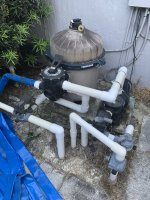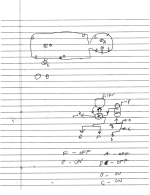Hi folks, just wanted to introduce myself here as a new convert. Bought a home with a pool 2 years ago in central Florida and am running and maintaining on my own. Originally was testing with "strips" and sanitizing with tri-chlor tablets and liquid bleach for shock, until I discovered an issue with stabilizer levels. Learned a bit more about tri-chlor + sanitizer and how useless my strips were and got myself a Taylor K-2006 and entered a whole new world. Recovering from 130 ppm CYA levels to about 70-80 ppm as I write this. Used a local pool service to help achieve this albeit with a somewhat skeptical aluminum process (also involved significant draining / refill will admittedly probably did most the work) and he also helped to fully clean out my Hayward DE3620 and put in fresh new grids. The pool is really sparkling now (thanks to the flocculant service) and I will do all i can to keep it that way even as I have to run with higher FC levels due to still modestly higher CYA level.
Anyways, trying to learn even more about my pool in this forum as it did not come with an instruction manual and as a software engineer, i like documentation . I recently embarked on mapping out all the intakes and returns, and what pipe goes where, hoping for a little help in that arena going forward. For example, my vacuum port doesn't seem to be pulling so was going to experiment with opening up intake D in my attached diagram.
. I recently embarked on mapping out all the intakes and returns, and what pipe goes where, hoping for a little help in that arena going forward. For example, my vacuum port doesn't seem to be pulling so was going to experiment with opening up intake D in my attached diagram.
Anyways, thank you for all the knowlege in this forum, i've already learned tons.
Best,
Eric
Anyways, trying to learn even more about my pool in this forum as it did not come with an instruction manual and as a software engineer, i like documentation
Anyways, thank you for all the knowlege in this forum, i've already learned tons.
Best,
Eric






